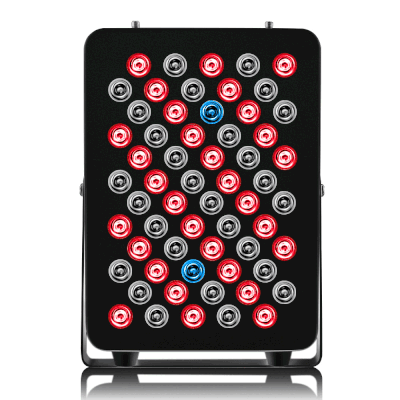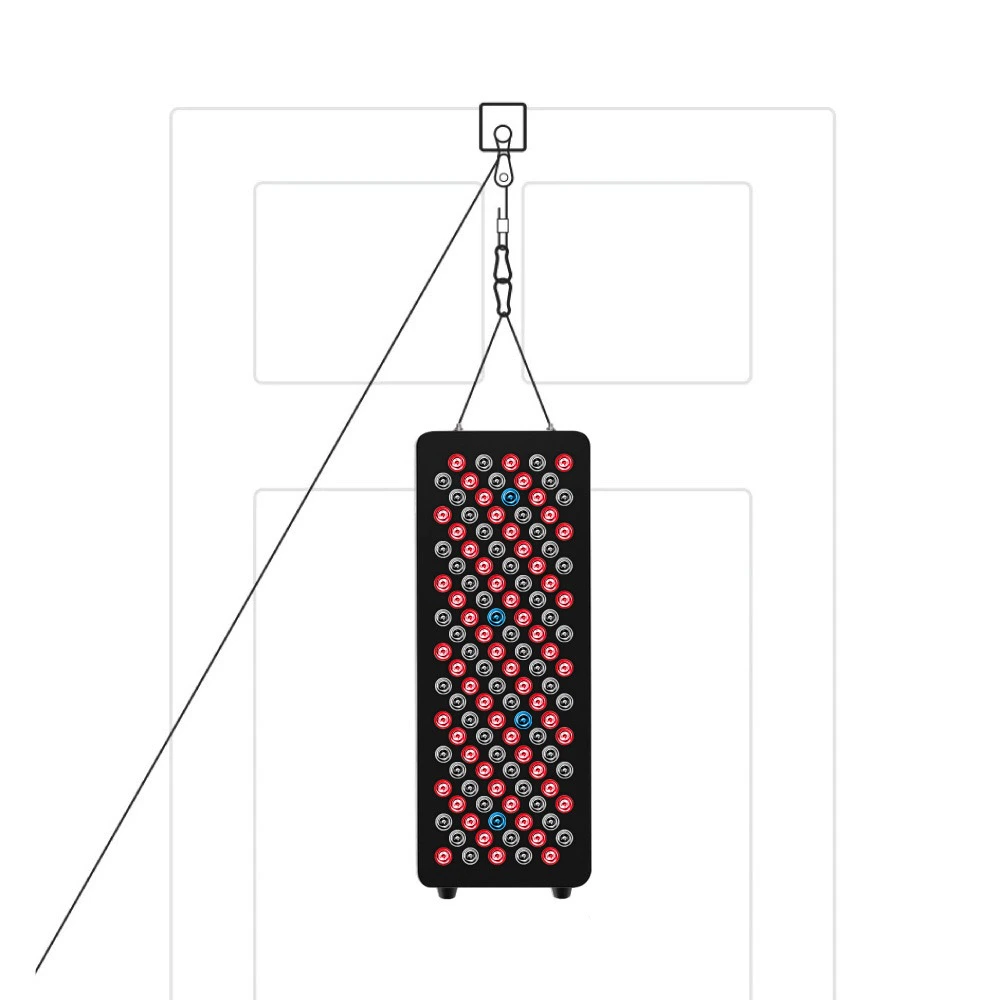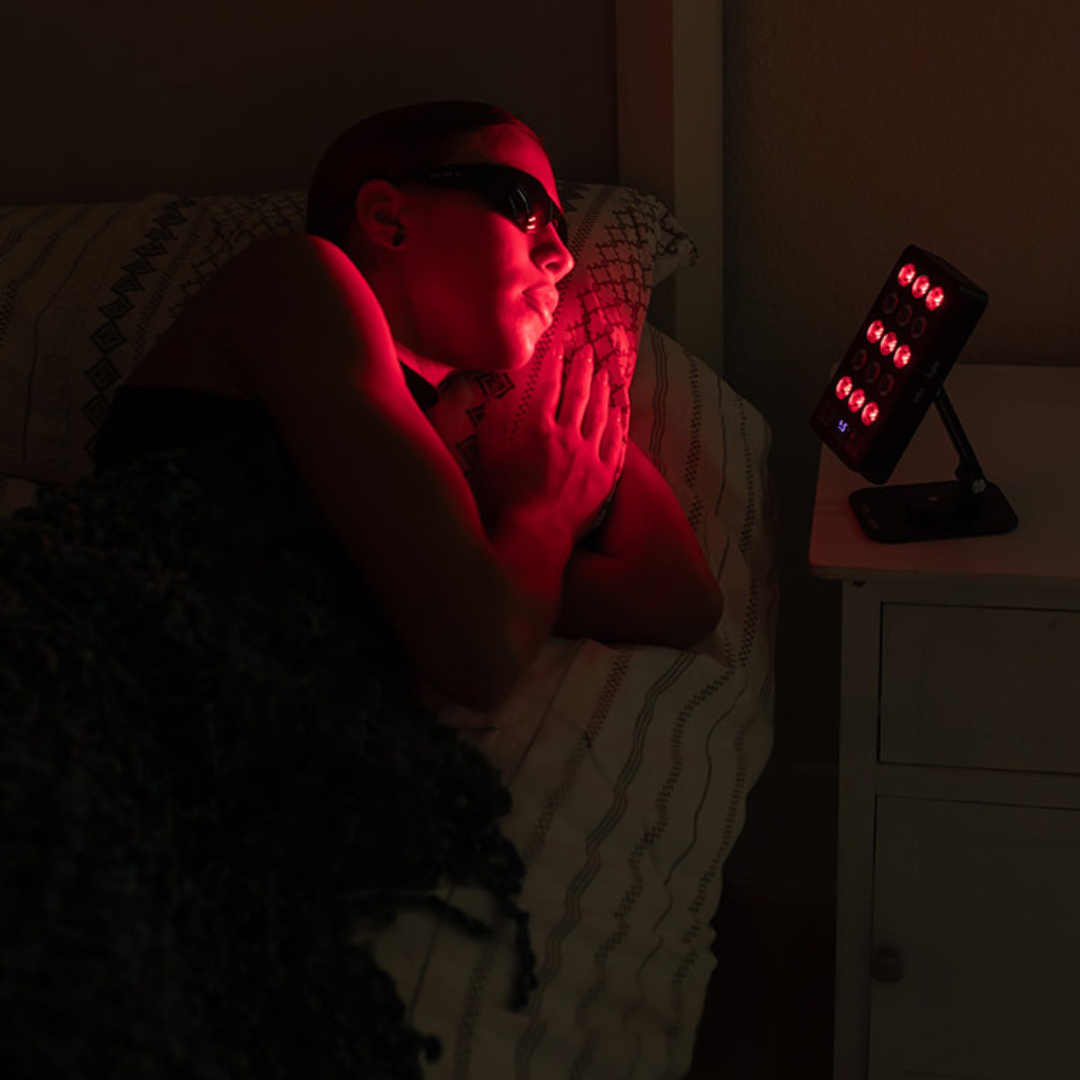![]() Free Shipping
Free Shipping ![]() Buy Now, Pay Later
Buy Now, Pay Later ![]() Eligible
Eligible
Blue Light Therapy for Actinic Keratosis

Actinic keratosis (AK) is a common skin condition caused by years of cumulative sun exposure. These rough, scaly patches are considered pre-cancerous, as they have the potential to develop into squamous cell carcinoma. While there are many treatment options, Blue Light Photodynamic Therapy (PDT) has emerged as a highly effective and popular method for treating widespread or multiple AKs.
Blue light therapy is a two-step process that uses a photosensitizing solution and a specific wavelength of blue light to precisely target and destroy abnormal precancerous cells, leaving the surrounding healthy skin largely unaffected.
Expert Insight: “Photodynamic Therapy, particularly with blue light, is a game-changer for treating field cancerization—where large areas of sun-damaged skin contain both visible and invisible actinic keratoses. It treats what you see and what you don’t, offering excellent cosmetic outcomes,” says Dr. Emily Watson, a board-certified dermatologist.
How Does Blue Light PDT Work? The Science Explained
The effectiveness of blue light therapy relies on a targeted photochemical reaction. It’s not a laser treatment, but rather a precise form of light-activated therapy.
The process works in two critical stages:
- Application of a Photosensitizer: A topical drug, most commonly Aminolevulinic Acid (ALA) or its derivative Methyl Aminolevulinate (MAL), is applied to the treatment area. This solution is absorbed much more readily by the fast-growing, abnormal cells of actinic keratoses than by healthy skin cells.
- Activation with Blue Light: After an incubation period (typically 1-3 hours), the skin is exposed to a specific blue light wavelength (around 417 nm). This light activates the photosensitizer within the AK cells, triggering a chemical reaction that produces a form of oxygen that destroys the targeted cells from the inside out.
The Blue Light Therapy Procedure: What to Expect
If you and your dermatologist decide blue light PDT is right for you, here’s a step-by-step breakdown of what happens during your appointment.
- Skin Preparation: The treatment area, often the face or scalp, is gently cleansed and sometimes lightly scaled to enhance penetration of the photosensitizing solution.
- Drug Application: The ALA or MAL solution is carefully applied to the affected skin.
- Incubation Period: You will wait for 60 to 180 minutes while the drug is absorbed. During this time, you must avoid sunlight and bright indoor light.
- Light Exposure: You will be given protective eyewear. The dermatologist will then position the blue light source over the treatment area. The exposure typically lasts 16 minutes and 40 seconds.
- Post-Treatment Care: The photosensitizer is deactivated, and you will receive detailed instructions on how to care for your skin as it heals.
Benefits and Advantages of Blue Light PDT
Why do dermatologists and patients often choose blue light therapy? The benefits are significant:
- High Efficacy: It has a very high clearance rate for actinic keratoses, often exceeding 70-90% after one or two treatments.
- Treats “Field Cancerization”: It effectively treats the entire “field” of sun-damaged skin, addressing both visible and subclinical AKs.
- Excellent Cosmetic Result: Unlike some treatments that can cause scarring, PDT typically results in smooth, rejuvenated skin with reduced photodamage and improved texture.
- Precision: The treatment selectively targets abnormal cells, sparing the surrounding healthy tissue.
- Non-Invasive: It is a surface-level treatment with no cutting or burning.
Potential Side Effects and Recovery
While effective, blue light therapy does come with a period of recovery and potential side effects. The most significant reaction occurs during and immediately after treatment.
Common Side Effects:
- Burning and Stinging: A burning, stinging, or prickling sensation is very common during the light exposure.
- Redness and Swelling: The treated area will become red, swollen, and resemble a moderate to severe sunburn for 24-48 hours.
- Crusting and Peeling: In the days following treatment, the AKs will often crust and peel away as the damaged skin sloughs off.
Recovery Timeline:
- Days 1-2: Peak redness, swelling, and discomfort.
- Days 3-7: Crusting and peeling begin. The skin underneath is new and pink.
- Weeks 2-4: The pinkness fades, revealing the final, improved skin texture.
It is crucial to protect the treated area from the sun during the healing process to prevent hyperpigmentation and other complications.
Blue Light Therapy vs. Other AK Treatments
How does blue light PDT stack up against other common treatments for actinic keratosis? The following table provides a clear comparison.
| Treatment Method | How It Works | Best For | Pros | Cons |
|---|---|---|---|---|
| Blue Light PDT | Light-activated drug destroys AK cells | Widespread AKs, field cancerization, excellent cosmetic outcome | Treats visible & invisible lesions, high efficacy, skin rejuvenation | Significant but short-term side effects, requires clinic visits |
| Cryotherapy | Freezes individual AKs with liquid nitrogen | Isolated, few, thick AKs | Quick in-office procedure, immediate treatment | Can cause blistering & hypopigmentation, doesn’t treat field damage |
| Topical Creams | (e.g., 5-FU, Imiquimod) Immune response or chemotherapy applied at home | Widespread AKs on various body parts | Treats a broad area, patient-applied | Long treatment course, intense inflammatory reaction, messy |
| Curettage & Electrodessication | Scraping away AKs followed by cauterization | Thick, hypertrophic AKs | High efficacy for individual lesions, tissue sample for biopsy | Can cause scarring, not for field treatment |
Is Blue Light Therapy Right for You? Candidacy and Considerations
Blue light PDT is an excellent option for many, but not all, patients. You may be a good candidate if:
- You have multiple actinic keratoses on your face or scalp.
- You have widespread sun damage (field cancerization).
- You are looking for a treatment that also offers cosmetic rejuvenation.
- Other treatments have been ineffective or are not suitable.
It may not be recommended if you:
- Have a known allergy to porphyrins (the photosensitizing agent).
- Have certain rare photosensitivity diseases (e.g., porphyria).
- Are unable to avoid sunlight for the required 48 hours post-treatment.
VELLGUS Elite V2
THE #1 RATED RED LIGHT DEVICE
VELLGUS pro V2
THE #1 RATED FULL BODY RED LIGHT DEVICE
Conclusion: A Powerful Tool in the Fight Against Skin Damage
Blue light photodynamic therapy represents a significant advancement in managing actinic keratosis. It is a targeted, effective, and cosmetically elegant solution that not only clears pre-cancerous lesions but also improves the overall health and appearance of sun-damaged skin. While the recovery process can be intense for a few days, the long-term benefits of clearing AKs and reducing skin cancer risk make it a valuable option for the right candidate.
If you are concerned about actinic keratoses, consult a board-certified dermatologist to discuss if blue light therapy is the right strategic choice for your skin health.








